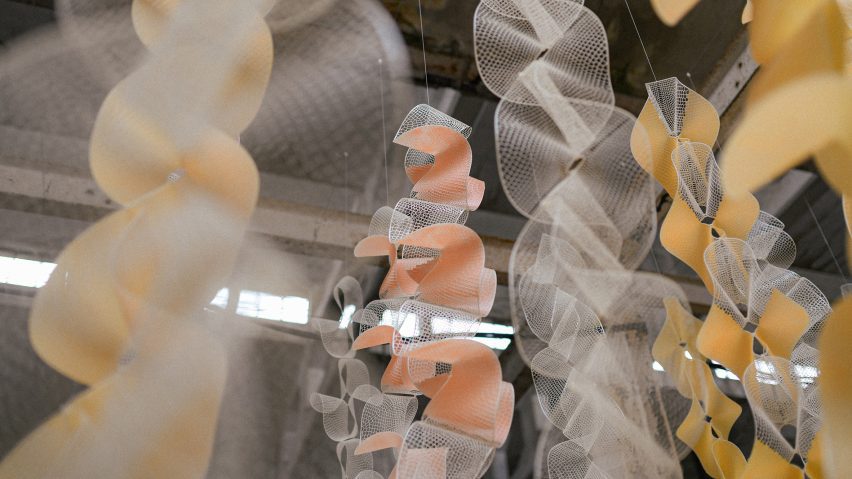
Sensbiom 2 biomaterial installation changes colour with UV exposure
A material that alerts people to "an invisible threat" by changing colour in response to UV radiation has been displayed in an installation by Crafting Plastics Studio and DumoLab Research.
The design and research studios set out to explore environmentally active biomaterials with the installation, titled Sensbiom 2 and displayed at Milan design week.
The installation is made of a cellulose- and algae-based composite material that is impregnated with photochromic pigments, which means they undergo a reversible change in colour when exposed to light of a particular frequency or intensity.
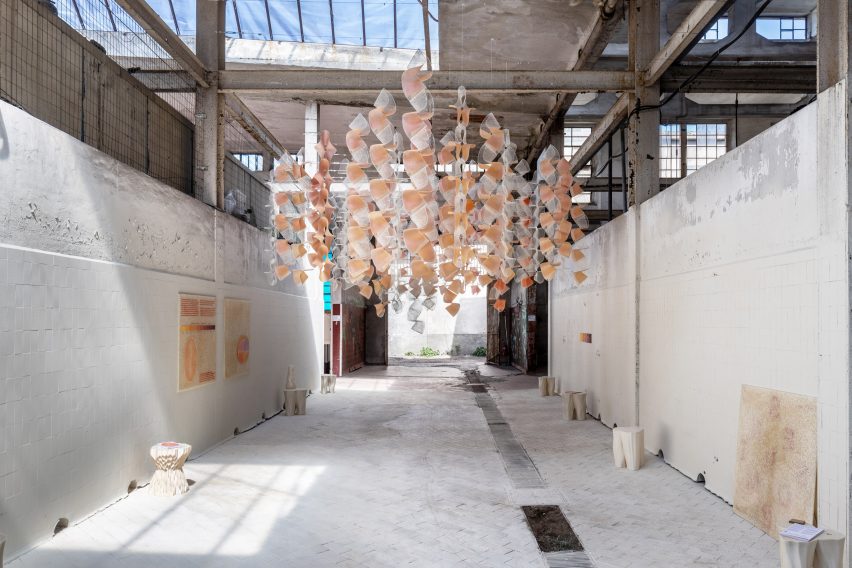
In Sensbiom 2, the material is yellow when ultraviolet radiation is low and changes to orange and red as the level rises.
Crafting Plastics and DumoLab aimed for the installation to make visitors more aware of the dangers posed by UV radiation, which the designers said can damage skin and eyes when the Global Solar UV Index (UVI), a measure developed by the World Health Organisation, rises above three.
In the city of Milan in spring, there is often a UVI of six in the spring and ten in the summer, which is high to very high.
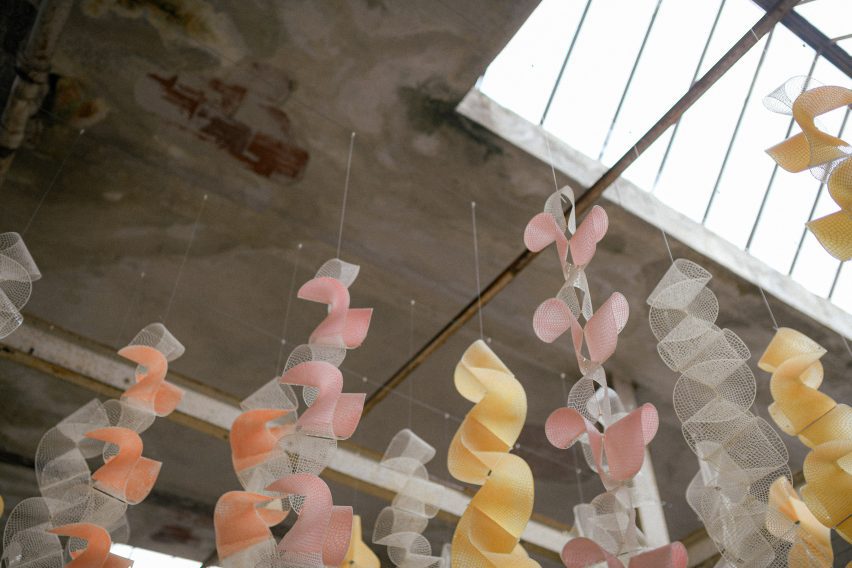
More broadly, the researchers wanted the installation to be a playful way to explore the possibility that objects made from environmentally interactive materials could help humans to reconnect with the planet.
"Sensbiom 2 is part of an ongoing project called Sensbiom (Senseable Material for Healthier Habitats), where we aim to explore the programmability and dynamic capabilities of future materials to become environmentally active and 'senseable'," Crafting Plastics co-founder Vlasta Kubušová told Dezeen.
"One of the primary objectives is to create healthier materials that can communicate the invisible threats in our surroundings."
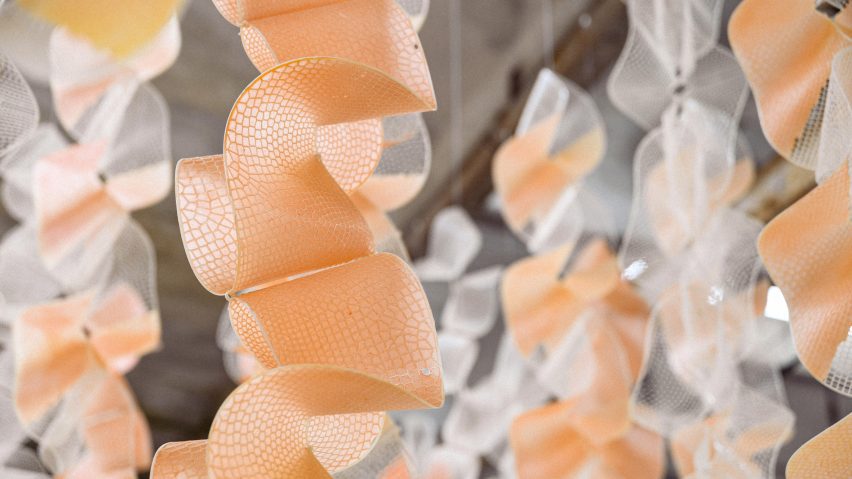
Kubušová explained that the photochromic components in Sensbiom 2 are derived from minerals like potassium, sodium and silica, and some found in fruits and plants, such as anthocyanins.
They change colour due to a chemical interaction that has the benefit of being visible almost instantly, but the researchers are more broadly interested in synthetic biology — the nature-replicating engineering approaches that have brought us technologies such as mRNA vaccines and lab-grown meat — and plans to use proteins in its materials in the future.
The proteins could respond to UV exposure but also potentially other environmental elements such as vehicle exhaust fumes or VOCs (the volatile organic compounds released by burning fuel or using products such as solvents).
"The question we seek to answer is how we can utilise synthetic biology methods to develop improved, healthier, and interactive biomaterials," said Kubušová.
"This exploration is conducted through a collaborative effort between designers, architects, material scientists, bioengineers and olfactory experts."
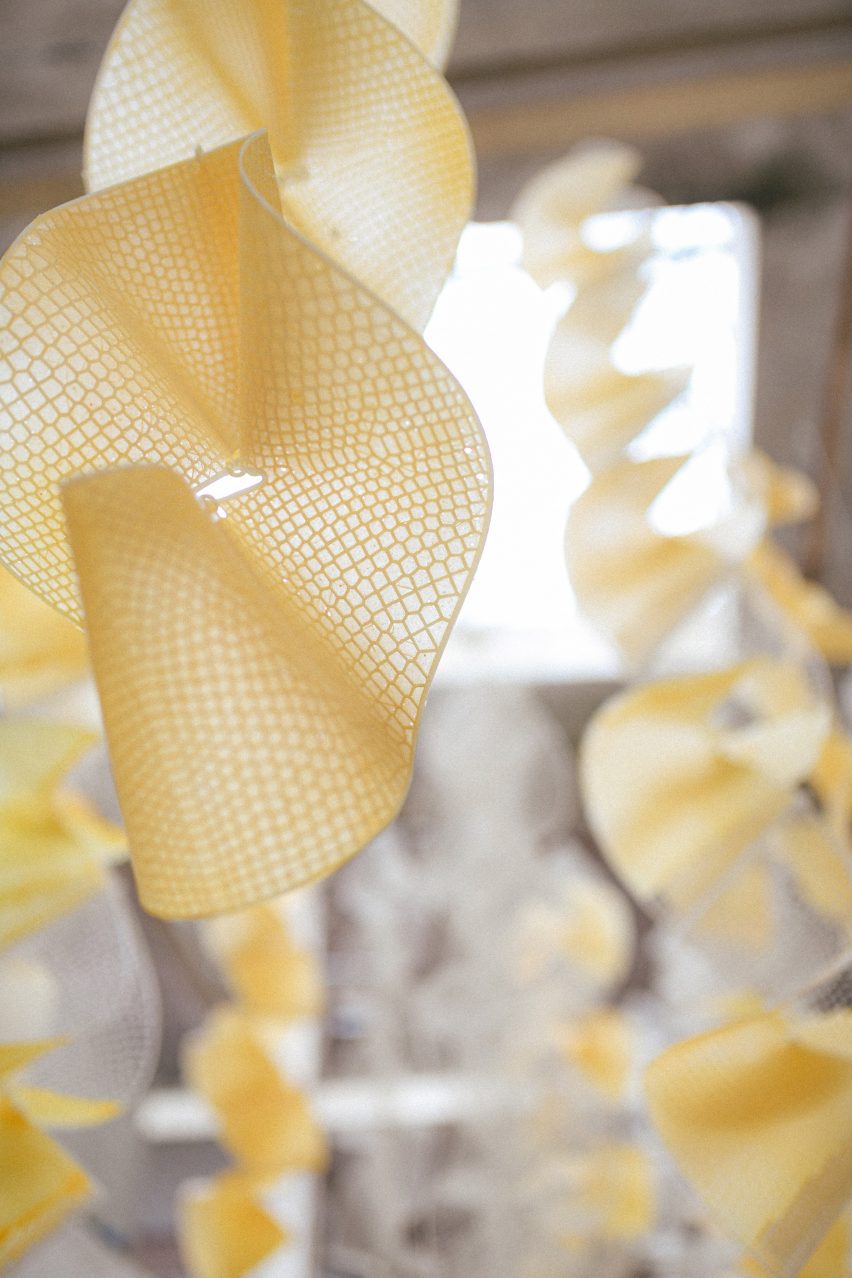
"We find olfaction particularly fascinating," she continued. "Can materials sense airborne toxins and harmful VOCs and alert us through colour changes or the release of purifying substances? Can we programme materials to 'smell' stress, diseases or even viruses? All of these possibilities are being explored within Sensbiom."
The Sensbiom 2 installation features a white lattice structure 3D-printed from an earlier material developed by Crafting Plastics called Nuatan, which is a biodegradable bioplastic. This supports the internal photochromic material.
The structure is printed in 2D and then folded into the 3D ribbon-like elements that hung from the ceiling of the Alcova Milano. Its ethereal quality is essential to its design — it is meant to be as lightweight as possible so that it will move with the airflow and capture more of its surroundings.
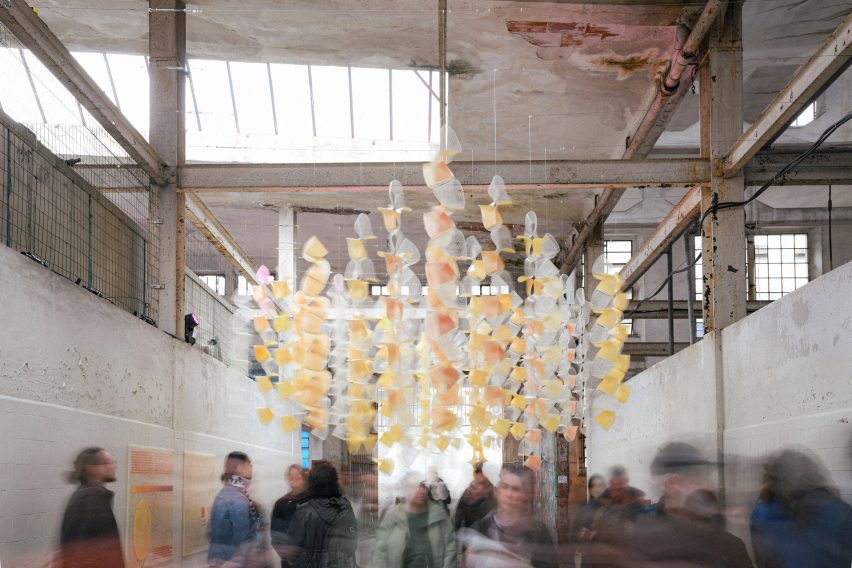
The installation is also foldable, easy to transport and, importantly, biodegradable.
"We are programming the composites to become strong, durable and scalable while maintaining biodegradability as one of our main priorities," said Kubušová.
She sees an application for the material in facade coatings, wearables and everyday outdoor objects.
Founded by Kubušová with Miroslav Král, Crafting Plastics is based in Bratislava, while its ongoing collaborator DumoLab Research is part of the USA's University of Pennsylvania Weitzman School of Design.
Crafting Plastics' previous work includes the BreaZea room divider made from a scented version of Nuatan, and an exhibition of the material at the London Design Festival.
Photography is by Petra Hurai.
Project credits
Project team: Vlasta Kubušová, Laia Mogas-Soldevila, Shivani Chawla, Abby Weinstein, Shuyao Geng, Martina Bajteková, Soňa Otiepková, Lukáš Gál, Štefan Nosko, Adam Trup, Alexander Kupko, Erik Král and Miroslav Král